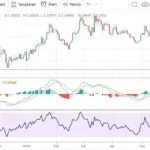The U.S. Securities and Exchange Commission (SEC) has been adjusting course on crypto regulation in 2025. Under new leadership and amid legal challenges, the agency is moving toward more defined rules and less regulatory ambiguity. For investors, developers, and service providers in the digital asset space, these changes bring both opportunities and risks.
What’s Changing
Here are the key shifts in how the SEC is regulating digital assets:
- Revocation of SAB 121
In January 2025, the SEC revoked Staff Accounting Bulletin 121 (SAB 121), issued in 2022. SAB 121 required companies holding digital assets for others to account for them as liabilities, which increased the cost and complexity of custody. Its removal is viewed positively by crypto firms and banks because it eases accounting burdens associated with safely holding crypto assets. (Reuters) (barrons.com) - Court-Ordered Clarity: Coinbase Petition
A federal appeals court (the Third Circuit) told the SEC it must better explain why it rejected a petition from Coinbase that would have led to formal rulemaking defining when digital assets are securities. The court ruled that the SEC’s previous refusal was “insufficiently reasoned” and “arbitrary and capricious.” While the court did not force the SEC to make new rules, it required more transparent justification of its decisions. (Axios) - “Project Crypto” and Agenda Under New Chair
With Paul Atkins now leading the SEC (replacing Gary Gensler), there is a push toward regulatory clarity, modernization, and reducing some of the restrictions seen under the previous regime. Key themes include:
- Establishing clearer rules (or safe harbors) about when a token is or is not a security. (PwC)
- Updating custody rules to better align with the realities of digital assets and their storage. (PwC)
- Allowing non-security crypto assets, crypto-asset securities, and traditional securities to be traded on regulated platforms more seamless-ly. (PwC)
- Removing or revising some proposed rules from the previous administration that were seen as overly burdensome. For example, Atkins has already withdrawn a number of proposed rules that hadn’t been finalized. (ft.com)
- Expanding Definitions (Dealers, Exchanges, Custody, etc.)
The SEC is redefining several functions to include digital-asset activities under existing securities laws. For example:
- Expanding what it means to be a “dealer” under securities law to potentially include digital asset traders or liquidity providers. (Deloitte)
- Proposals in the regulatory agenda to update rules for broker-dealers, exchanges, custody, and market infrastructure so that they explicitly address digital asset securities. (Seward & Kissel LLP)
- More No-Action Letters & Broader Safe Harbors
There has been an increase in no-action letters — communications from the SEC to specific entities indicating that under defined facts, the SEC will not enforce certain securities laws. These help clarify what kinds of activities may be less likely to trigger enforcement. Especially for token issuance, custody, and other operational crypto business functions, these letters help show precursors for future formal rulemaking. (PwC)
What It Means for Investors & Crypto Businesses
These regulatory shifts have several implications:
| Area | Implications / Risks | What To Pay Attention To |
|---|---|---|
| Legal Clarity vs Uncertainty | Although the SEC is moving to clarify rules, many things are still in flux: what counts as a security, what standards custody providers must meet, how exchanges will be regulated. Startups and projects still face uncertainty. | Monitor rulemaking proposals, court decisions, and SEC statements. Look for safe-harbors you can rely on, and avoid putting all operations into gray areas. |
| Custody & Institutional Participation | Removing SAB 121 and clarifying custody rules may lower barriers for banks, funds, insurers, and other institutional players to hold crypto. That could increase liquidity, legitimacy, and institutional demand. | If you’re investing, check whether the custodians and institutions you deal with are adjusting their practices to comply. If you’re running a crypto business, ensure your custody approach meets new or expected SEC standards. |
| Token Classification | The “security vs non-security” distinction remains central. That determines which tokens/projects fall under full securities laws vs those that might be treated differently. Misclassification risk is high. | Study how the Howey test is being interpreted, track court cases, and see how new rules or safe harbors define tokens. Be conservative if you’re unsure. |
| Exchanges & Trading Platforms | Platforms that list or trade digital assets may have to meet new disclosure, listing, and operational rules; digital-asset securities trading may become more normalized under existing securities markets. | If you’re using or building exchanges, watch for new listing rules, or requirements about reporting, transparency, and whether securities-laws compliance is needed. |
| Investor Protections | With more regulation, there could be stronger protections: disclosures, audit or reserve requirements (especially for stablecoins or tokens that claim backing), and stricter oversight of intermediaries. | For investing, favor tokens and platforms that are transparent, regulated, or at least following best practices. Avoid projects with unclear legal status or minimal disclosure. |
| Regulatory Costs & Compliance Burden | As rules come in, many businesses must invest in legal, compliance, auditing, risk management — which raises cost especially for smaller players. Regulatory changes might also cause delays or risk of enforcement for non-compliance. | Budget for compliance. Seek legal counsel. Consider whether your jurisdiction or business model minimizes regulatory friction. |
What Remains Unclear / Risks Ahead
- Timing and Scope of New Rules: Many proposals are still at draft or proposed-rule stage. Some changes won’t be finalized for months. (Seward & Kissel LLP)
- Congressional Role Versus Regulatory Agency Power: Some stakeholders believe certain aspects (like defining securities, or altering the Howey Test) require legislation rather than just agency rulemaking. There may be pushback.
- Judicial Review: Courts continue to play a role. The Coinbase ruling shows that if SEC does not clearly justify its decisions, courts may force more clarity or limit agency discretion.
- Enforcement Risk Remains: Even in a more rule-based approach, violations (especially of fraud, misrepresentation, custody lapses) remain likely enforcement targets.
What Investors Should Do Now
Here are some practical steps for people investing in or building in the crypto / digital asset space:
- Do Legal/Regulatory Due Diligence: Before investing in a token, project, or exchange, check not just the technical and economic aspects but also how the project classifies itself, its disclosures, its legal status.
- Favor Transparent Custody & Audits: Using reputable custodians, verifying audited financials, understanding reserve backing for tokens (especially stablecoins).
- Keep Funds Diversified: Regulatory shifts can cause abrupt changes in valuations, trading restrictions, or delistings. Diversification helps mitigate risk.
- Watch New Rules & Participate: When the SEC issues proposed rules, public comments, or no-action letters, these are your opportunity to see what’s coming, perhaps influence outcomes, or adjust your strategy.
- Stay Adaptive: The regulatory landscape is still in flux; what’s allowed today may be regulated tomorrow. Build flexibility into your business or investment strategy.
Conclusion
In 2025, the SEC is shifting from an era of heavy enforcement and regulatory uncertainty toward clearer, more defined rules for digital assets. Under new leadership, there’s momentum to modernize custody standards, decide more clearly which tokens are securities, and reduce some regulatory friction. But the journey is only partly underway: many proposals are still tentative, and enforcement remains a risk, especially for those not aligning with evolving expectations.
For investors and crypto businesses, this period of regulatory change offers significant opportunity — but also demands care. Keeping informed, structuring operations or investments defensibly, and working with experienced legal advisors are likely to separate those who thrive from those who suffer unintended consequences.
If you like, I can send you a summary of what changes are expected in the U.S. vs in Asia (including Malaysia) so you can see local implications too.















